by Judy Biss | Apr 14, 2016
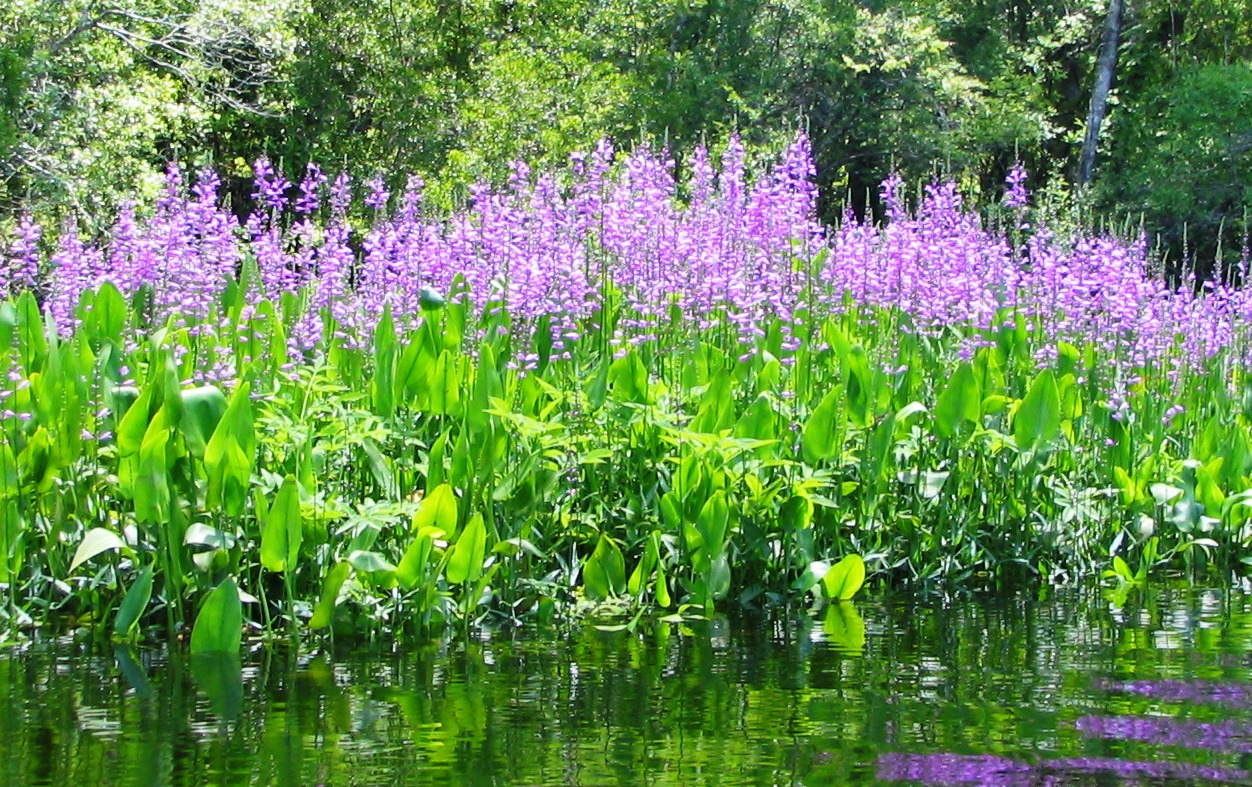
A stand of purple flowers called “False Dragon-Heads (Physostegia spp.) growing along the St. Marks River. They are behind a stand of pickerelweed (Pontederia cordata) that has not yet bloomed. Photo by Judy Biss
This is the time of year when gardens burst forth with lush green growth and colorful flowers. With a little planning and management, your backyard pond can also put on the same show each year and fight unwanted pond weeds at the same time!
Fish and farm ponds are abundant in the Florida panhandle. Most are two acres or less and are used for producing catfish, bass, and bream; for recreation and wildlife viewing; for fishing and swimming; and for irrigation and livestock watering. Ponds play an important role in various aspects of agricultural production and rural life, and for that reason, maintaining their ecological health is critical to their many uses.
Managing aquatic plants is one important component of pond ownership. If you are a pond owner, you have probably seen and read many articles related to controlling and removing aquatic weeds. Just as in terrestrial gardens, there are a number of non-native (and sometimes native) plants that can become quite weedy and problematic in and around your pond. Hydrilla, water hyacinth, torpedograss, Chinese tallow, alligator weed, and the tiny water spangles (common Salvinia) are just a few examples that plague our waterways and shorelines. But, controlling and removing weeds is only part of the bigger picture of pond management. Planting native wetland plants is another ecologically important and aesthetically enriching management tool as well.
By establishing beds of healthy native plants, you are also fighting against weedy non-native invasive plants through competition for space. Some other benefits of native aquatic plants are they act as a barrier, filtering fertilizers such as nitrogen and phosphorus from runoff, and they help control erosion. Also, because native plants are adapted to our local environments, they are generally easy to grow, and most require little or no extra water or fertilizer.
Below are a few guidelines to follow if you are considering the use of native aquatic plants in your pond.
Know Your Plants:
Depending on the type, aquatic plants generally grow in three forms. Emerged, like maidencane or bulrush, submerged like coontail and southern naiad, and floating, like the tiny free floating duckweed, and spatterdock and fragrant water lily which are rooted with floating leaves and flowers at the water’s surface. There are many good UF/IFAS publications and online resources for aquatic plant identification. Some are listed at the end of this article.
Plan Ahead:
Some questions to ask are, what is the primary use of your pond? Is it wildlife viewing, swimming, fishing, irrigation, etc.? The answers to these questions will help you determine how much of your pond and shoreline will be planted, and what types of plants to use. For example, if you use your pond for fishing and irrigation, you should leave some areas of the shore unplanted and mowed to allow for access, and you should not plant submerged plants that may clog irrigation intakes. On the other hand, if your pond is primarily for attracting wildlife, you can plant most of the shoreline including some types of submerged aquatic plants.
Right Plant Right Place:
You may have heard this Florida Friendly Landscaping term before, as it holds true for any garden including aquatic gardens. Choose plants that grow best in the water depth and planting “shelves” you have in and around your pond. By “shelf” we are referring to the slope of your shoreline. Is it a gradual, gentle slope into deeper water, or is it steep and abrupt? Also, become familiar with seasonal changes in your pond’s water depth, as it may affect the plants you select.
Prepare For Maintenance:
Just like a vegetable garden, your newly planted aquatic plants (especially those that are emerged) will need attention in the first year or so of establishment. Remove dead plants and weed out unwanted plants.
Where to Purchase the Plants:
For a list of Florida native plant suppliers, visit the Association of Florida Native Nurseries (AFNN) Please Note: collecting wild plants in Florida is subject to various regulations and may require permits! Visit this website for details on wild collection – Florida Plant Collecting and Transport, Regulations and Permitting, University of Florida Herbarium
Here are some helpful resources used for this article with more detail on establishing aquatic plants around your pond:
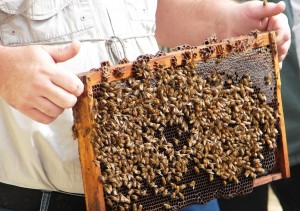
by Judy Biss | Mar 11, 2016
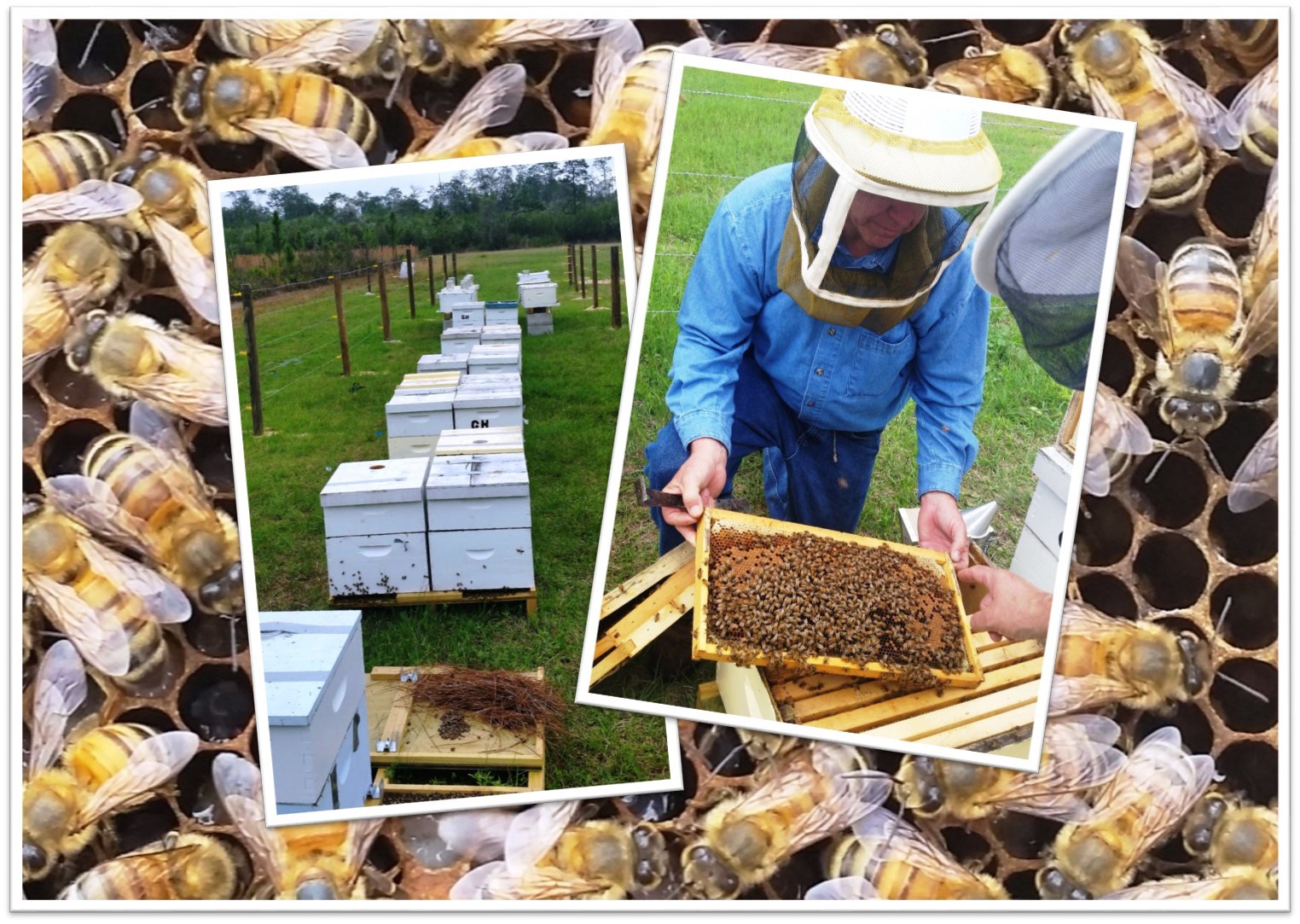 The Beekeeping in the Panhandle Working Group is pleased to offer the 5th Annual Beekeepers Field Day And Trade Show 2016 Beekeeping is one of the fastest growing hobby and commercial endeavors in Florida. There is much to learn and share about this fascinating trade.
The Beekeeping in the Panhandle Working Group is pleased to offer the 5th Annual Beekeepers Field Day And Trade Show 2016 Beekeeping is one of the fastest growing hobby and commercial endeavors in Florida. There is much to learn and share about this fascinating trade.
The workshop and trade show offers something for every level and interest, and this year’s event features:
- Extended Opportunities for Hands-On Open Hive Experiences
- Presentations on the Latest in Research-Based Beekeeping Management Practices
- Interaction With Expert Beekeepers
- Vendors with Beekeeping Equipment and Hive Products
- Door Prizes Include a Grand Prize Each Day of a 10-Frame Bee Hive!
Dates:
Friday April 1, 2016 and Saturday April 2, 2016
Place:
UF/IFAS Extension Washington County Office,
1424 Jackson Avenue, Chipley, FL 32428
850-638-6180
Time:
8:00 am – 5:00 pm each day
Registration:
Includes Lunch, Refreshments, Door Prize Tickets, & Educational Sessions
-
$25 for One Day or $40 for Both Days per Person
-
$10 Age 12 and Under Each Day
-
Late Fee of $10.00 after March 22nd.
Two ways to register:
For More Information Contact:
- UF/IFAS Extension Washington County at 850-638-6180
- UF/IFAS Extension Calhoun County at 850-674-8323
Download the printable flyer with agenda & details:
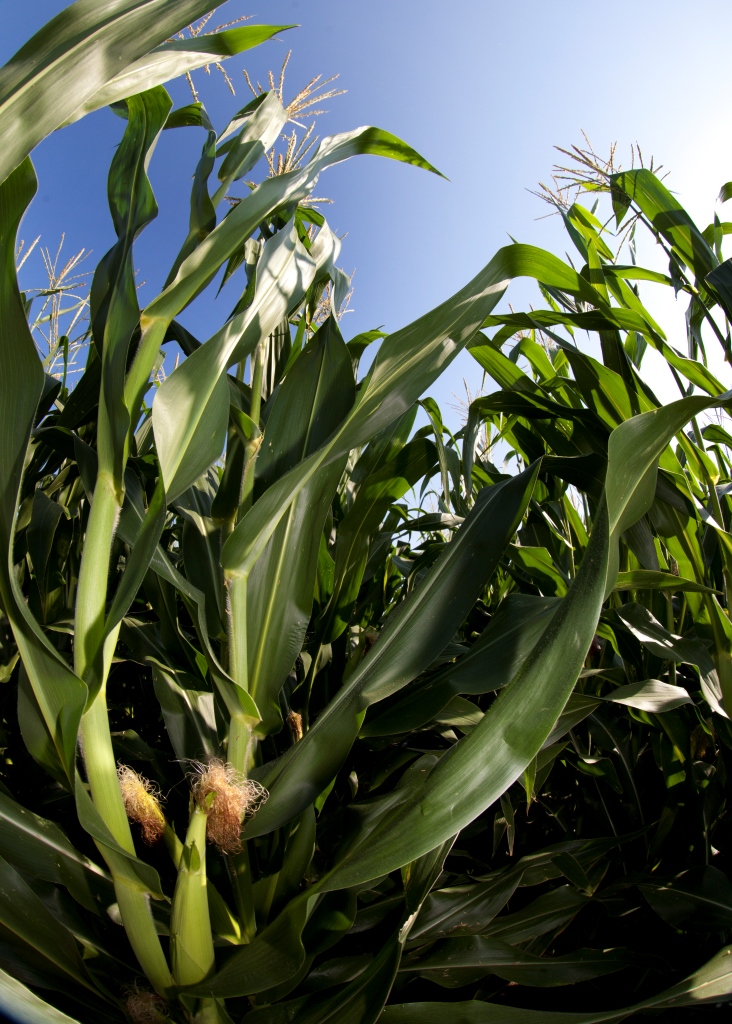
by Judy Biss | Feb 3, 2016

Corn tassels at the top provide the pollen needed to produce the perfect ear of corn on the stalk below. UF/IFAS Photo by Tyler Jones.
It won’t be long until row crops and vegetable gardens are planted and thriving once again next spring. A sometimes taken for granted, yet critical element of any prosperous crop is successful pollination. Most of us know what “text book” pollination means, but did you know in cucurbit plants, (squash, melon, pumpkin) at least 1,000 grains of pollen must be evenly deposited in each bloom to produce a uniform marketable fruit? Or, to grow our favorite summer delight, each watermelon flower must be visited by a honeybee a minimum of 8 times? And how about the fact that each silk in a corn flower is connected to one kernel on the ear of corn, and for the kernel to develop properly pollen must travel down the silk through a pollen tube to the waiting kernel? Add to these facts the dizzying variety of pollen and flowers, bloom times, pollination dynamics, weather conditions, plant growth, and availability of pollinator insects, then one can begin to see how amazing pollination is, and how critical it is to our food supply.
What are the basics of pollination?
The first step of fruit or vegetable reproduction takes place when flowers emerge. Plant flowers can be male, female, or perfect flowers. The male flowers produce pollen. The female flowers have ovaries which, when fertilized, become the fruit or vegetable. “Perfect” flowers have both male and female parts within a single flower. Most garden vegetables such as beans, peppers, and tomatoes have perfect flowers, whereas cucurbits like squash, pumpkins and watermelon, have separate male and female flowers on the same vine. For successful pollination to occur, the male pollen must reach the female ovaries in order for the fruit or vegetable to be produced.
Methods of Pollinating
Transfer of pollen to the plant ovaries for fruit and vegetable production, whether in the same “perfect” flower, or in another separate female flower, occurs in several ways. Some plants, like corn, depend on wind to transfer pollen to the silk, and ultimately ovaries, of the female flower. Other plants, like squash depend on the help of pollinators like insects to deliver the pollen to the ovaries. Plants that produce perfect flowers can self-pollinate, but still benefit from contact with pollinators. In small backyard gardens, many crops in the cucurbit family (squash, melons, etc.) or those that have separate male and female flowers, can be pollinated by the gardener by hand. In the absence of insect pollinators in dooryard gardens, hand pollination will increase yields.
The Importance of Bees
Obviously, in production agriculture, hand pollination of crops is not feasible, and although some crops are wind pollinated, most crops need insect or animal pollinators to accomplish the job. As we know, bees are one of the most important pollinating insects, and it is well documented that yields of many fruit and vegetable crops increase in both quality and quantity when pollinated by honey bees. According to the UF/IFAS publication Minimizing Honey Bee Exposure to Pesticides:
The Business of Pollination
Because they are so critical to increased quality and quantity yields, managed honey bee colonies are used across the country in a thriving contractual pollination industry. According to the UF/IFAS publication Sample Pollination agreement,
The business of pollination is crucial to the agricultural industry in the United States. In Florida, the major need for pollination is in fruit and vegetable production.
And according to the UF/IFAS publication Minimizing Honey Bee Exposure to Pesticides,
Rental of honey bee colonies for pollination purposes is a highly demanded service and a viable component of commercial beekeeping and agriculture. Bee colonies are moved extensively across the country for use in multiple crops every year. There are also over 3,000 registered beekeepers in Florida, managing a total of more than 400,000 honey bee colonies and producing between 10–20 million pounds of honey annually.

Cotton is largely self-pollinating, but attractive to bees. In some cotton varieties, pollination by bees can increase seed set per boll. Source: University of Georgia Pollination: Crop Pollination Requirements. Photo by Judy Biss
Crop Pollination Requirements
The dynamic of pollination is a fascinating and critical component of both dooryard and production agriculture. Research on plant health, varieties, growth, and potential, as well as research on honey bee colony health and management, all play a role in producing sustainable food yields. The University of Georgia has summarized pertinent literature related to common fruit and vegetable crop pollination requirements (Apple, Blueberry, Cantaloupe, Cucumber, Squash, Watermelon, Other Crops). This comprehensive resource provides the recommended number of beehives per acre for each crop, plus additional information on plant variety characteristics, and other useful information related to maximizing pollination and yield. Check it out: Pollination: Crop Pollination Requirements
So whether you have a dooryard garden or a large farm, it will benefit you to learn all there is to know about your crop’s pollination requirements to maximize yield and quality potential.
For more information on this topic, please see the following publications used as resources for this article:
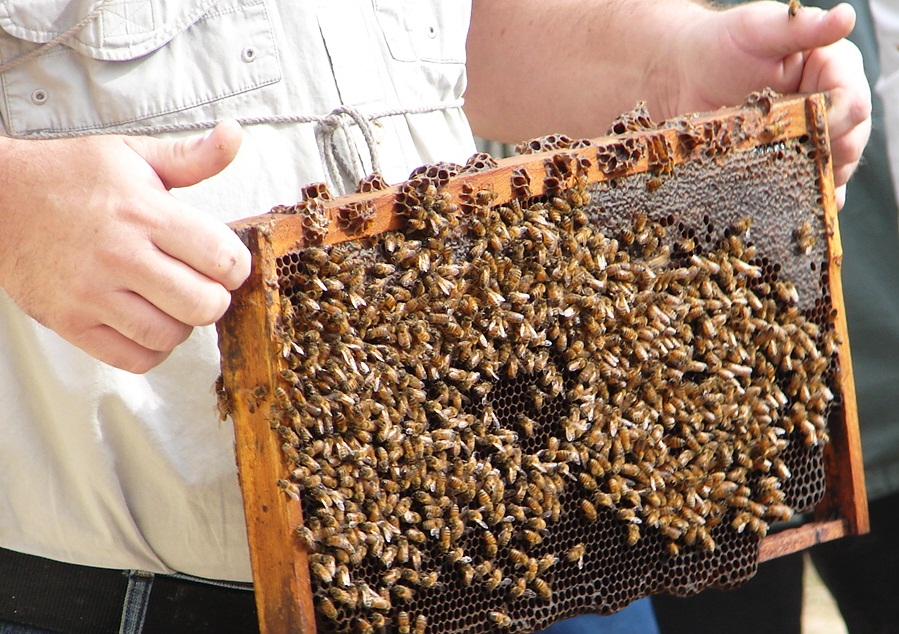
by Judy Biss | Oct 21, 2014
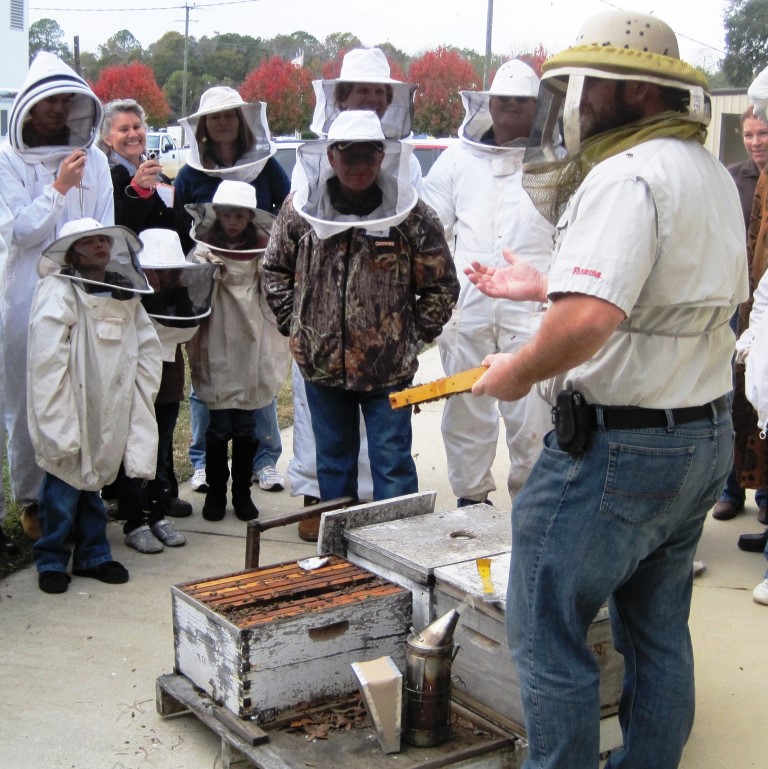
The Florida State Beekeepers, Central Panhandle, Chipola, and Tupelo Beekeepers Associations, in partnership with the Florida Department of Agriculture, and UF/IFAS Extension, are proud to offer the 4th annual Beekeepers Workshop & Trade-show November 14th & 15th! This event will provide hands-on educational opportunities including interaction with expert beekeepers, open hive demonstrations, and more! This event will be held at the UF/IFAS Extension Washington County Office, 1424 Jackson Avenue, Chipley, FL 32428, 850-638-6180

 Registration: Includes Lunch & Refreshments
Registration: Includes Lunch & Refreshments
$25 for one day or $40 for both days per person.
$10 age 12 and under each day.
Late fee of $10.00 after November 5th.
Please download this registration form to attend:
Here is a printable event flyer with details:

by Judy Biss | Feb 7, 2014
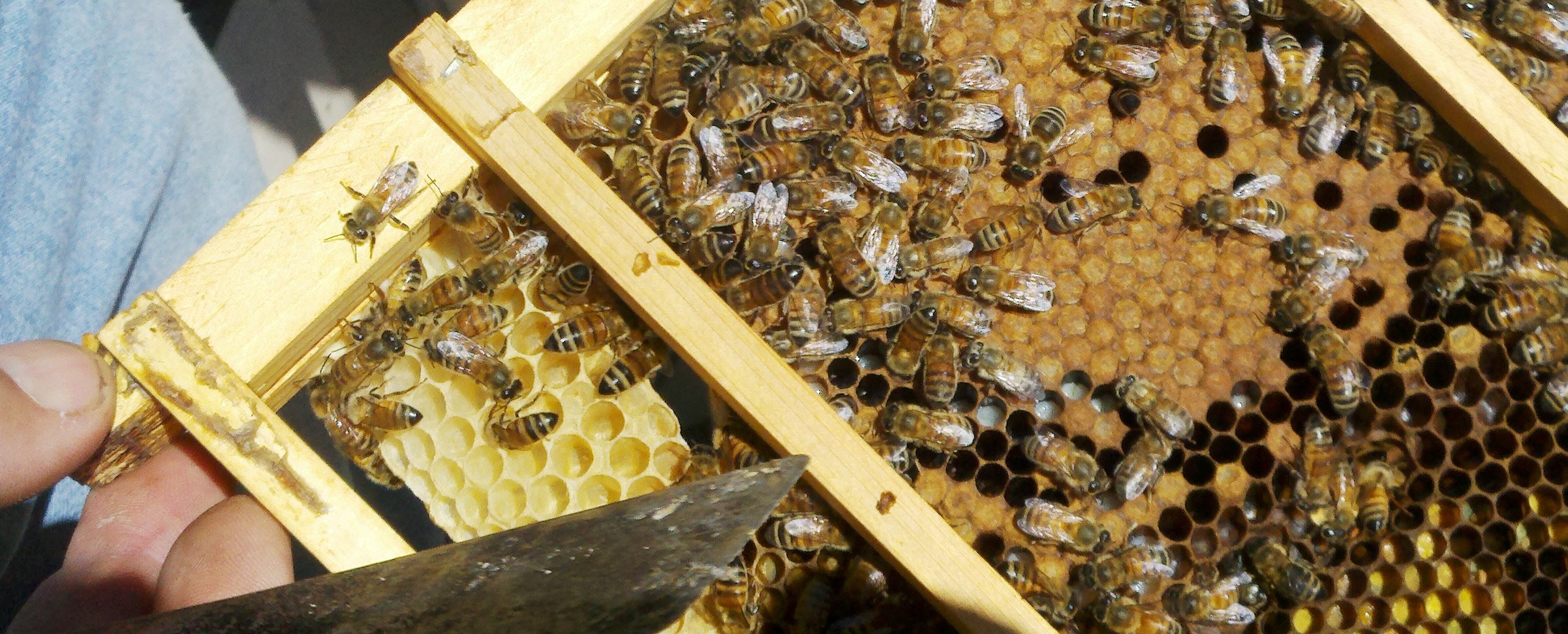
Photo by Judy Ludlow
The UF/IFAS Panhandle Agriculture Extension Team will once again be offering a Basic Beekeeping School in February and March. These classes will be offered via interactive video conferencing at Extension Offices across the Panhandle. Details are listed below, please call your local UF/IFAS Extension Service to register and if you have any questions. See you there!
- These classes will be taught by Dr. Jamie Ellis and other state and nationally recognized beekeeping experts from the University of Florida Honey Bee Research and Extension Lab and the Florida Department of Agriculture & Consumer Services Bureau of Plant and Apiary Inspection.
- There will be three Monday-evening and one Tuesday evening interactive video conferences from 6:00 – 8:00 pm Central time, (7-9 pm Eastern time) and a Saturday bee-yard field day.
- Each 30-50 minute presentation will be followed by a question/answer period
February 24: Honey Bee Biology and Anatomy
March 3: Varroa Mite Biology and Control
March 10: Honey Bees of the World and Beekeeping History
March 15: Bee-Yard Field-Day – A hands on teaching opportunity
March 18: Yearly Management of the honey bee
- The cost for all five classes is $25 per person or $40 for a family. This fee will cover course materials and refreshments.
- Deadline to register is February 17, 2014. Please contact your local UF IFAS Extension office to register or to find out more details, or click on the following link for a printer-friendly flyer: 2014 Beekeeping in Panhandle
Bay County 850-784-6105
Calhoun County 850-674-8323
Escambia County 850-475-5230
Franklin County 850-653-9337
Gadsden County 850-875-7255
Gulf County 850-639-3200
Holmes County 850-547-1108
Jackson County 850-482-9620
Jefferson County 850-342-0187
Leon County 850-606-5202
Liberty County 850-643-2229
Okaloosa County 850-689-5850
Santa Rosa County 850-623-3868
Wakulla County 850-926-3931
Walton County 850-892-8172
Washington County 850-638-6180











